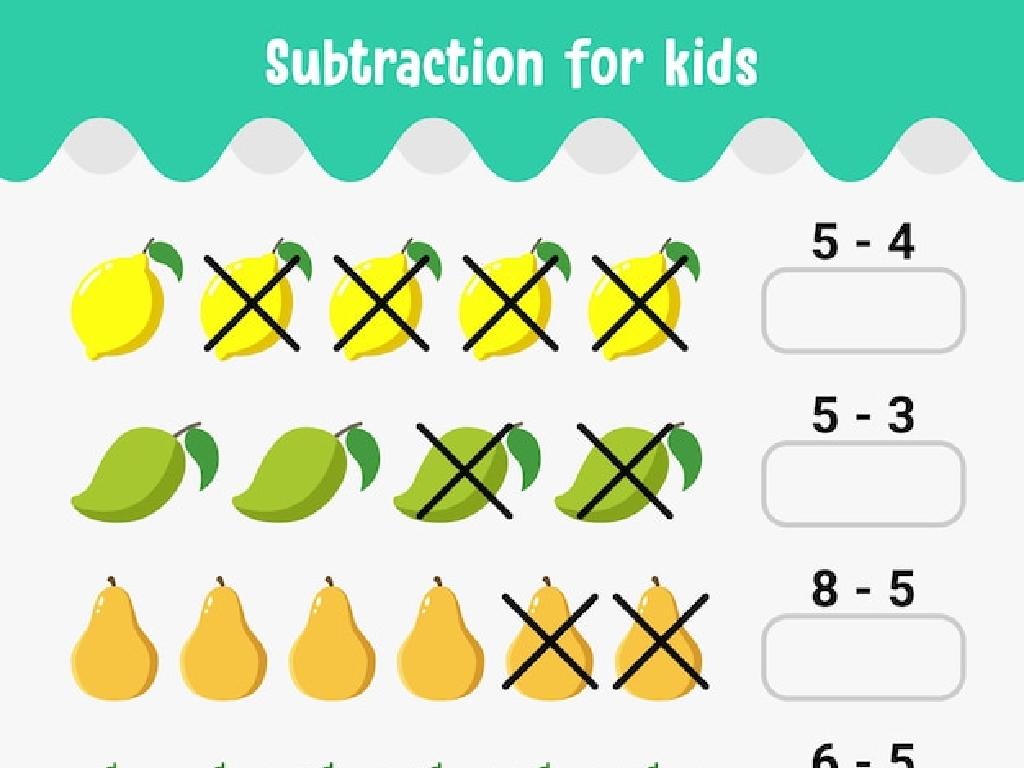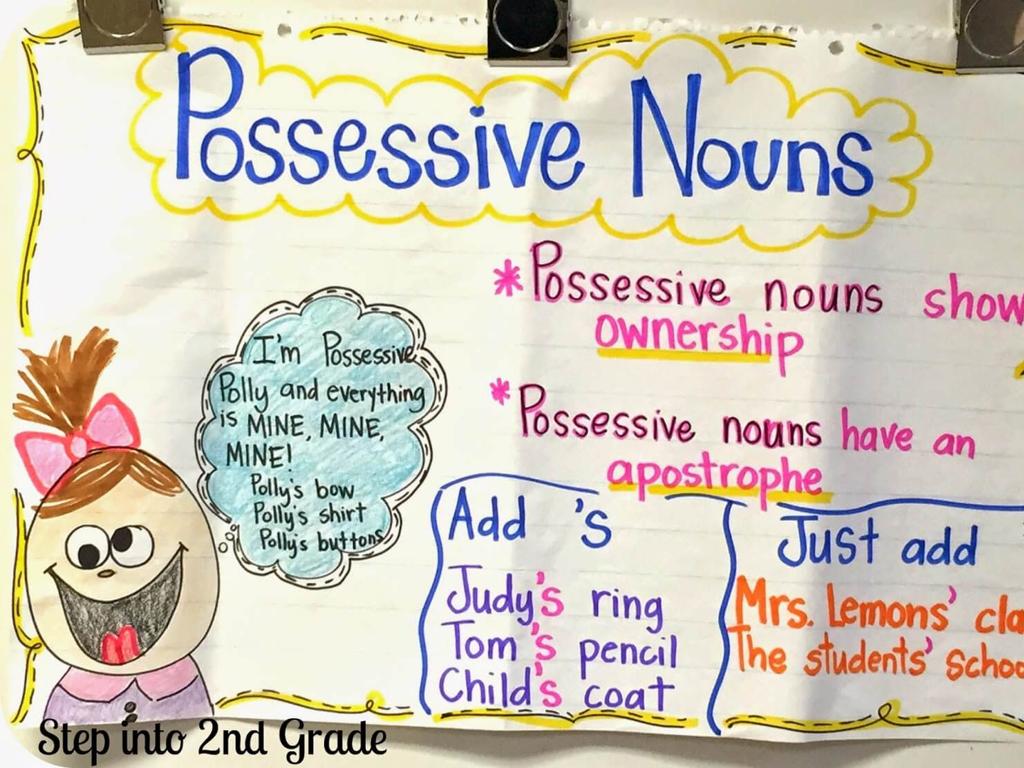Unit Prices
Subject: Math
Grade: Eighth grade
Topic: Consumer Math
Please LOG IN to download the presentation. Access is available to registered users only.
View More Content
Understanding Unit Prices in Consumer Math
– Introduction to Consumer Math
– Defining Unit Prices
– Price per single unit of an item, e.g., price per liter of milk
– Calculating Unit Prices
– Divide total cost by number of units, e.g., $5 for 10 apples is $0.50/apple
– Significance of Unit Prices
– Helps compare costs and find better deals, essential for budgeting
|
This slide introduces the concept of unit prices within the broader subject of Consumer Math, which is a practical application of mathematical skills in everyday shopping and budgeting. Unit prices are the cost per single unit of an item, allowing consumers to compare prices regardless of packaging or quantity. Understanding how to calculate unit prices by dividing the total cost by the number of units is crucial for making informed purchasing decisions. Emphasize the importance of this skill in helping students become savvy consumers who can identify the best value for their money. Provide examples of common grocery items to illustrate the concept. Encourage students to practice this skill during their next shopping trip as a real-world application of the lesson.
Understanding Unit Prices
– Define Consumer Math
– The math used in everyday buying and selling.
– Real-life application of math
– Budgeting, calculating interest, and price comparisons.
– Calculating unit prices
– Divide total cost by number of units to find unit price.
– Comparing product costs
– Use unit prices to determine which product offers the best value.
|
This slide introduces students to the concept of Consumer Math, emphasizing its importance in everyday life. It’s crucial for students to understand that math isn’t just theoretical but has practical applications such as budgeting, calculating interest, and especially for this class, comparing prices to make smart buying decisions. When calculating unit prices, students should practice by taking the total cost of an item and dividing it by the number of units it contains to find the cost per unit. This skill will enable them to compare the costs of different products and decide which is more economical, thereby making informed consumer choices. Provide examples such as comparing prices of different brands of the same product in various package sizes.
Understanding Unit Prices
– Define Unit Price
– The cost for one unit of a product.
– Unit Price for comparison
– Compare costs of items regardless of quantity.
– Calculating Unit Price
– Divide total cost by number of units.
– Practical applications
– Use in everyday shopping to save money.
|
This slide introduces the concept of Unit Price, which is a crucial element in consumer math, especially for making economical choices while shopping. The Unit Price is simply the cost per single unit of measure, such as per liter, kilogram, or item. By understanding and calculating the unit price, students can compare the prices of different-sized items to determine which is the more economical choice. Emphasize the importance of this skill in everyday life, such as deciding between different brands or sizes of products in a grocery store. Provide examples of calculating unit prices from real grocery store ads to illustrate the concept.
Calculating Unit Prices
– How to find Unit Price
– Divide total price by quantity
– Example: Pack of pens
– $5.00 for 10 pens equals $0.50 per pen
– Practice with different items
– Calculate unit prices for various products to understand value
|
This slide introduces the concept of unit price, which is a crucial aspect of consumer math and helps students make informed decisions while shopping. Start by explaining that the unit price is the cost per single item or measure, which allows for comparison between different products and sizes. Use the example of a pack of pens to illustrate the calculation. Encourage students to bring examples of items from home to calculate unit prices in class, fostering practical application of the concept. This exercise will enhance their mathematical skills and consumer awareness.
Real-Life Application: Unit Prices
– Unit prices help find best deals
– Compare different brands
– Calculate unit prices together
– We’ll use real examples to calculate the price per unit of items.
– Become a savvy shopper
– Understanding unit prices can lead to smarter shopping choices.
|
This slide aims to show the practical application of unit prices in everyday life. Start by explaining that a unit price is the cost per unit of measure (like per ounce, liter, or pound) which allows consumers to compare prices of different-sized packages of the same product. Encourage students to think about how this could be useful when shopping on a budget or trying to get the most value for their money. Walk through a few examples with the class, comparing the unit prices of different brands of a common product, such as cereal or soda. This will help them understand how to make cost-effective decisions and become more financially literate consumers. The activity will involve students calculating unit prices of items they commonly see or use, fostering engagement and practical understanding.
Class Activity: Unit Price Analysis
– Find unit prices using store flyers
– Determine best value items
– Compare prices of similar items to see which is more cost-effective
– Present findings to the class
– Reflect on the activity
– Think about what you learned from this exercise
|
This activity is designed to give students practical experience with unit prices, an essential concept in consumer math. By analyzing real store flyers, students will learn how to calculate the unit price of items and determine which products offer the best value for money. Divide the class into small groups and provide a variety of flyers from local stores. Encourage students to look for different sizes and brands of the same product to compare. After calculations, each group will present their findings, discussing why certain items are a better purchase. This will help them understand the importance of unit prices in everyday shopping and budgeting. Possible variations of the activity could include comparing generic vs. brand-name products, bulk purchases vs. single items, or finding the best deals in a given budget.
Unit Prices: Conclusion and Recap
– Importance of unit prices
Unit prices help compare different products and sizes economically.
– Calculating unit prices
Divide the total price by the quantity to find the unit price.
– Making informed choices
Use unit prices to choose the best buy and save money.
– Practice and application
|
As we conclude, remind students that understanding unit prices is crucial for becoming savvy consumers. It empowers them to make cost-effective choices by comparing prices of products regardless of quantity or packaging. Recap the calculation method by dividing the total cost by the number of units. Emphasize the real-world application of this skill in everyday shopping scenarios to get the best value for money. Encourage students to practice this skill during their next shopping trip as a practical homework exercise, and to bring examples to the next class for discussion.
Homework: Exploring Unit Prices
– Complete the Unit Price Worksheet
– Find unit prices on a shopping trip
– Look at price tags, divide total cost by quantity
– Compare unit prices of different items
– Use your worksheet as a guide to compare items
– Reflect on the best value products
– Think about which items offer more for less money
|
This homework assignment is designed to provide practical experience with unit prices, reinforcing the day’s lesson. Students should use the worksheet to practice calculating unit prices from the comfort of their home. Encourage them to accompany a family member on a shopping trip to see unit prices in action. They should compare the unit prices of similar items to determine which is the better deal, considering factors like quality and quantity. This real-world application helps solidify their understanding of unit prices and consumer math. In the next class, discuss their findings and experiences to enhance their learning further.






